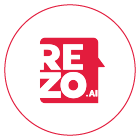
How to Automate Contact Center Workflow

How to Automate Contact Center Workflow


What is a Workflow?
A workflow refers to a series of interconnected tasks or activities that need to be executed to achieve a specific goal or objective. In the context of a contact center, a workflow outlines the sequence of steps involved in managing customer interactions from initiation to resolution. It provides structure and guidance, ensuring that agents follow predefined processes to deliver consistent service.
What are Automated Contact Center Workflows?
Automated contact center workflows employ advanced technologies such as Artificial Intelligence (AI) and Robotic Process Automation (RPA) to streamline and optimize the entire customer interaction journey. These workflows automate repetitive and rule-based tasks, reducing the burden on agents and enabling them to focus on more complex and value-added activities. By eliminating manual errors, automating customer service workflows can improve operational efficiency and enhance the overall customer experience.

Is there a Need for Contact Center Workflow?
Contact centers are the representation of an organization, for their customers. With manual processes and cross-department associations, the uniformity in communication can get hampered. With contact center workflows, businesses can not only reduce redundant work for their employees but also provide a high quality customer experience. Here are some other reasons why brands need contact center workflows:
Improved Efficiency
Automating contact center workflows eliminates the need for manual data entry and repetitive tasks. This frees up valuable time for agents, allowing them to handle more customer interactions and achieve higher productivity levels.
Enhanced Consistency
With predefined workflows, contact centers for businesses can ensure that every customer interaction follows a standardized process. This consistency leads to improved service quality and better customer satisfaction.
Reduced Errors
Automation reduces the likelihood of human errors in tasks like data entry or routing. By minimizing mistakes, businesses can prevent customer dissatisfaction and costly rework.
Scalability
Contact centers often experience fluctuating call volumes. Automated workflows enable businesses to scale their operations seamlessly, ensuring smooth handling of high call volumes during peak periods without compromising service levels.

Insights and Analytics:
Automated contact center workflows provide workflow specific reports into agent performance, customer behavior, and operational efficiency. These insights can be leveraged to drive continuous improvements, optimize processes, and make data-driven decisions.
Increased Compliance
Contact centers often deal with sensitive customer information. Automated workflows ensure compliance with regulations such as GDPR or PCI DSS by eliminating the risk of human errors while handling data.
Features of a Workflow
An effective contact center workflow should possess certain key features to maximize its impact. Here are some essential elements:
Task Management
Workflows include task management capabilities to assign, track, and manage customer requests and interactions efficiently. With a set of predefined steps and routine tasks, a workflow empowers the team with right data to complete their tasks.
Knowledge Database
A Knowledge Database is a treasure trove of information, ranging from product details and troubleshooting guides to FAQs and best practices. By having all this information in one place, agents can find answers to customer inquiries in seconds, leading to faster resolution times and improved customer satisfaction.
Queue Management:
To optimize resources, workflows offer queue management features that ensure fair distribution of workloads among agents. Workflows have the capability to incorporate rules that prioritize certain tasks. This allows urgent or high priority customer issues to be addressed promptly, further enhancing the customer experience. Furthermore, automated workflows can incorporate time-based rules to ensure that no customer inquiry is left unanswered for an extended period of time, thereby improving response times and customer satisfaction.
Integration Capabilities with CRM and Database
A contact center workflow seamlessly integrates with various systems and applications used in the contact center, such as CRM, ticketing, or knowledge base systems. By integrating CRMs, businesses can seamlessly receive customer information and history, product pricing details, current discounts, inventory details, and more.

Reporting and Analytics:
Robust reporting and analytics capabilities provide invaluable insights and visibility into the key performance metrics of an organization. These tools allow for a comprehensive understanding of agent productivity, portraying a clear picture of how efficiently agents are working and where improvements can be made. In addition, they deliver critical information about customer satisfaction levels, thus helping to identify areas where customer service may need to be enhanced.
Customization and Flexibility
It is essential that workflows in a contact center are customizable to meet the unique needs of individual contact center businesses. Each contact center has its own unique set of challenges and requirements, and a one-size-fits-all approach simply won't suffice. Therefore, it is imperative to have a flexible system in place that can be tailored to suit these unique needs. It needs to be adaptable enough to accommodate evolving requirements. Businesses are dynamic entities with ever-changing needs and a contact center workflow system should be able to adapt and evolve alongside the business it is serving.
Automate your Contact Center Workflow with Rezo.AI
Now that we understand the significance of automated contact center workflows, let's explore a step-by-step process to implement automation effectively:
Step 1: Identify Pain Points
Evaluate your existing contact center processes to identify pain points, bottlenecks, and areas that can benefit from contact center automation. This will help prioritize the areas to automate and set achievable goals. With Analyse AI, you get an extensive hub of knowledge that points you to the right direction of growth. With customer sentiment analysis and agent performance, businesses can easily identify the gaps in their system to build a robust workflow.
Step 2: Define Workflow Steps
Once you have defined the painpoints, it is time to build an automated customer journey for different use cases. Define a clear and standardized set of steps for managing customer interactions. This includes the sequence of actions, necessary data inputs, and decision points.
Step 3: Leverage Intelligent Routing
Once routine workflows are integrated, the next step is to analyse the queries that require human touch. By implementing intelligent routing mechanisms, businesses can ensure that customer interactions are directed to the most appropriate agent or team based on skills, availability, and priority.
Step 4: Integrate Systems
With cloud infrastructure and microservices architecture, you can seamlessly Integrate your workflow solution with any third party tools like CRM, ticketing, and knowledge base platforms to ensure seamless data exchange and a smooth and comprehensive customer experience.

Step 5: Automate Repetitive Tasks
Identify tasks that can be automated, and leverage AI and RPA technologies to automate these tasks and eliminate manual errors. With RPA, Rezo.AI identifies and performs different routine tasks like data entry, system navigation and transaction processing in a contact center.
Step 6: Monitor and Optimize
Regularly monitor workflow performance and leverage reporting and analytics tools to gain insights. Use this data to identify areas for optimization and continuous improvement. By carefully studying and understanding this information, you can identify any potential areas that could benefit from optimization. This could lead to significant improvements in efficiency and productivity.
Step 7: Training and Change Management
Provide comprehensive training to agents on the new workflow processes and provide ongoing support. Implement change management strategies to ensure a smooth transition and high adoption rates.
Automating contact center workflows can revolutionize your operations, streamline customer interactions, and elevate your overall customer experience. By leveraging the right technology and following best practices, businesses can unlock substantial productivity gains, cost savings, and improved customer satisfaction.
Transform Your Contact Center with Rezo.AI: Automate your workflows, boost efficiency, and provide exceptional customer experiences. Say goodbye to manual errors and inefficient processes. Get started today!
Frequently Asked Questions (FAQs)

Take the leap towards innovation with Rezo.ai
Get started now














